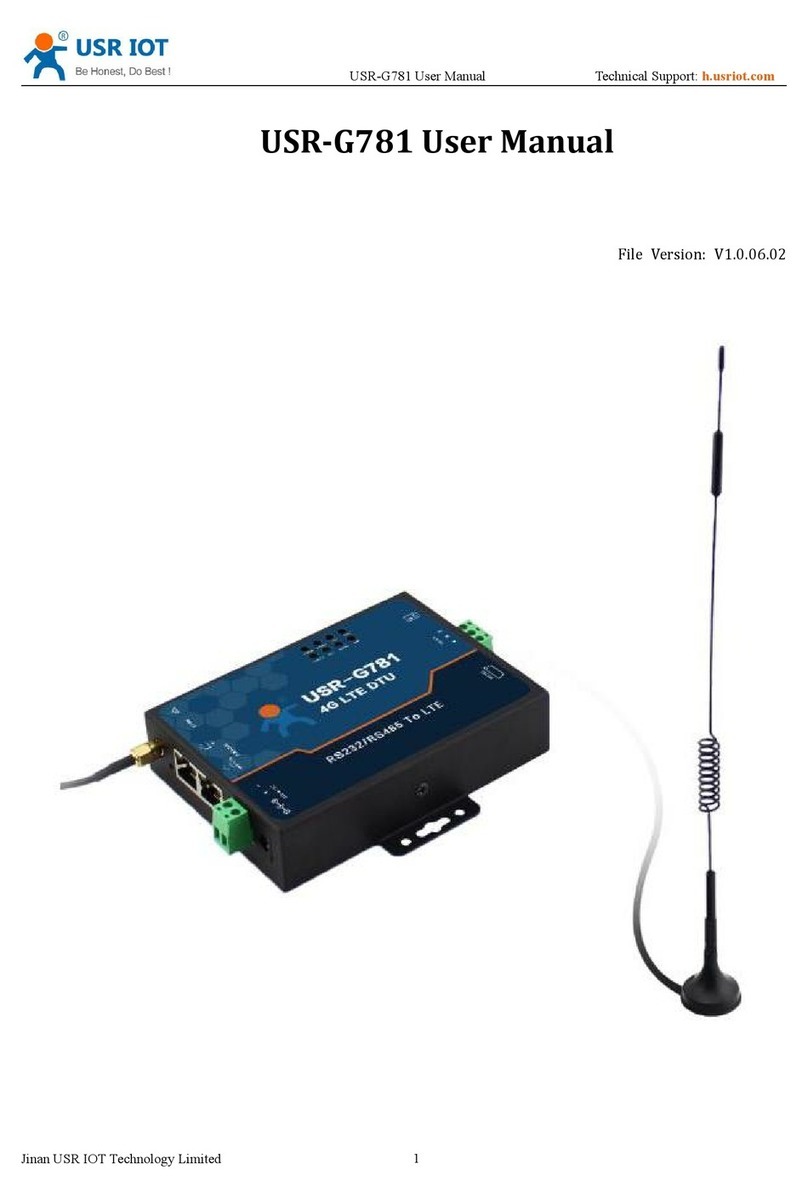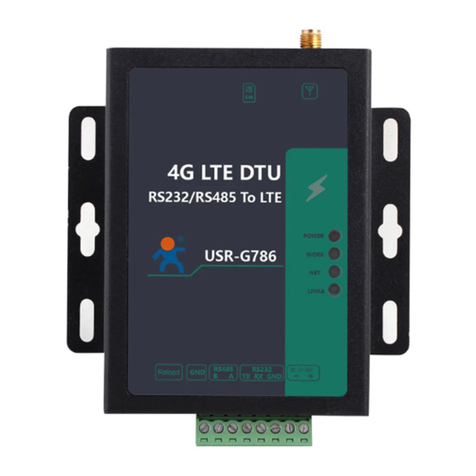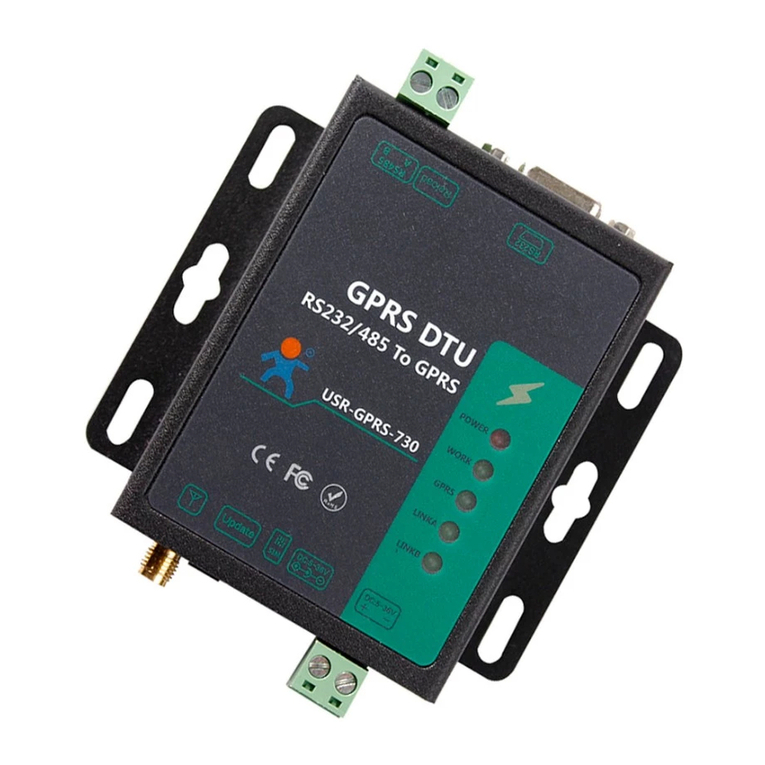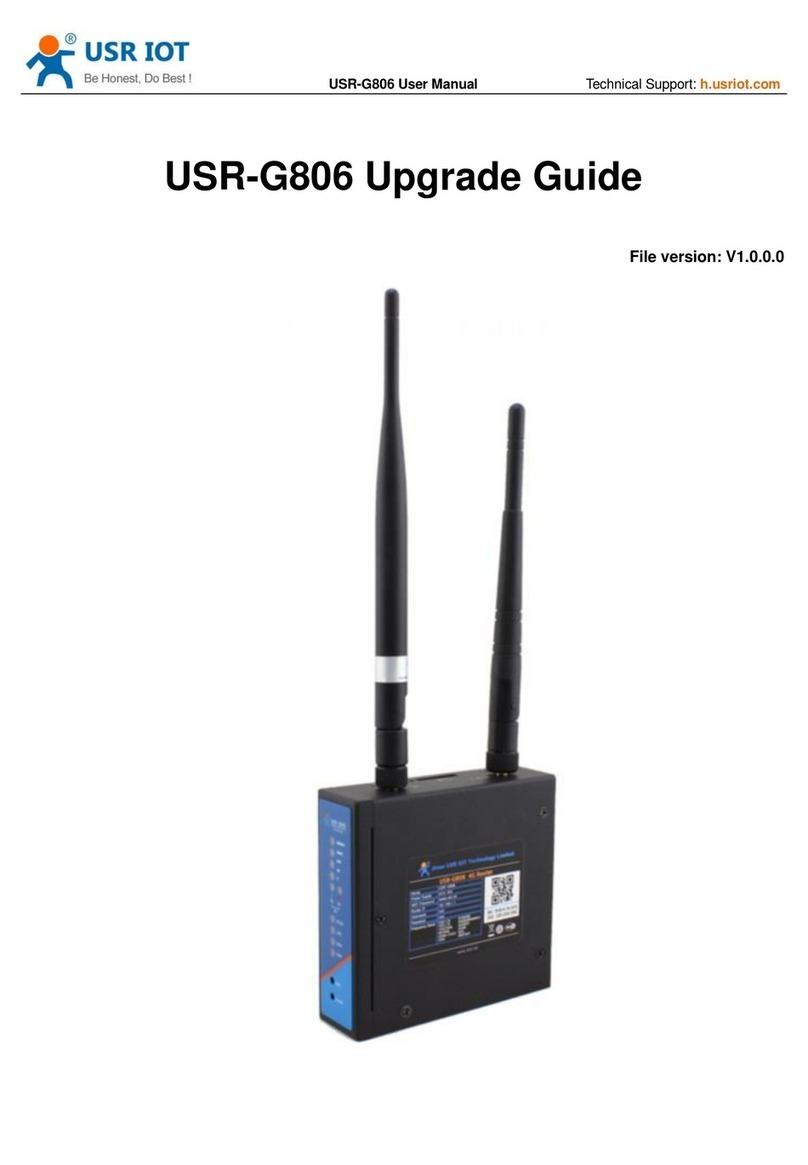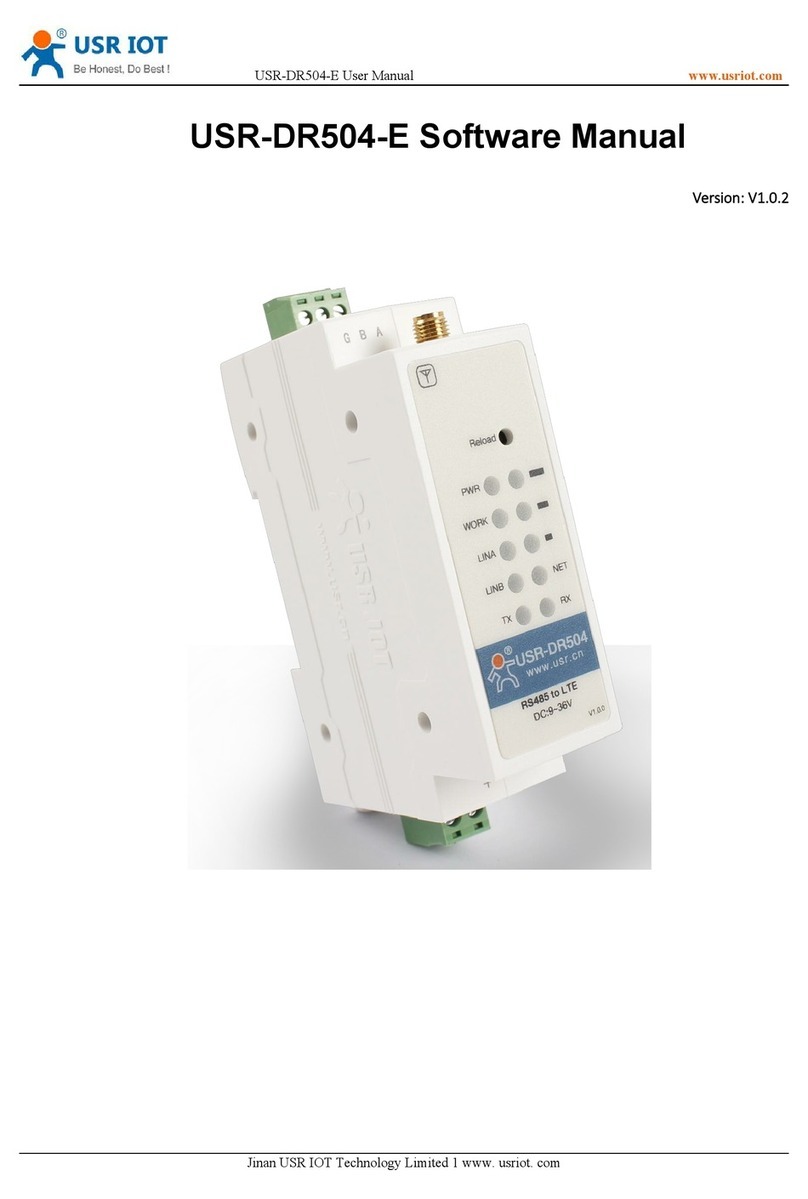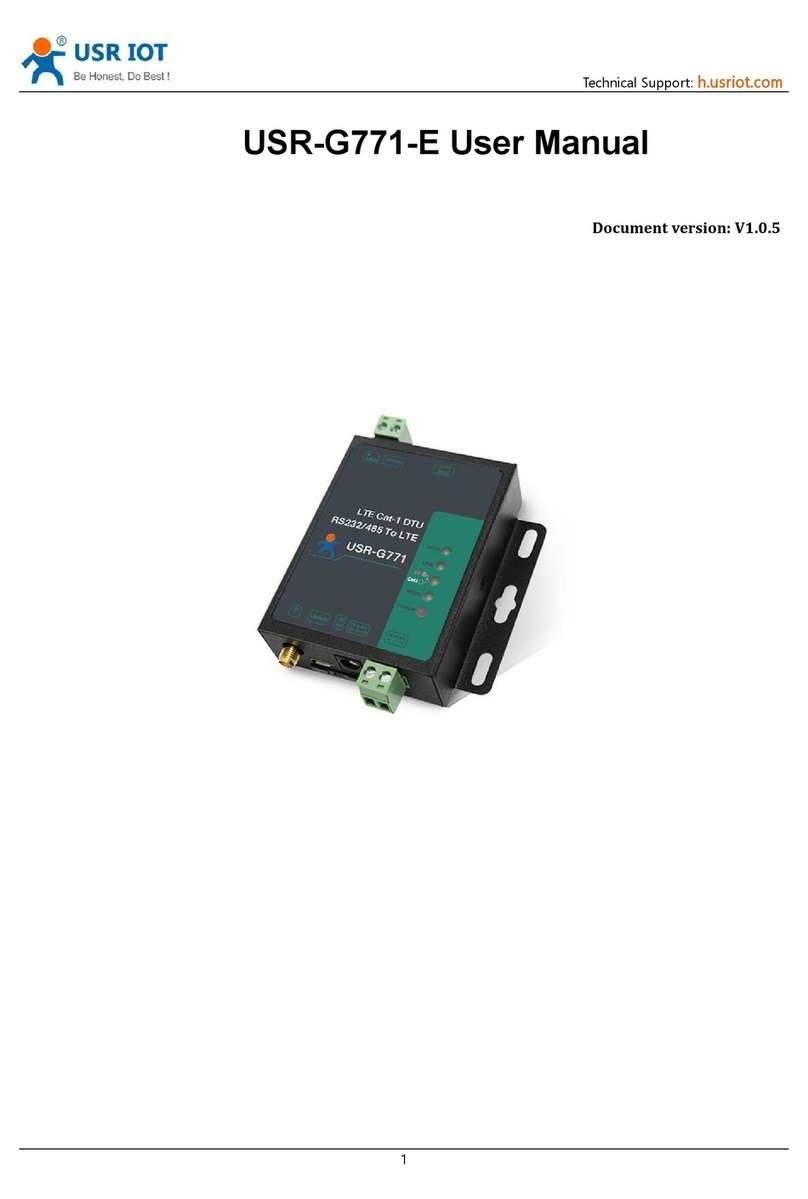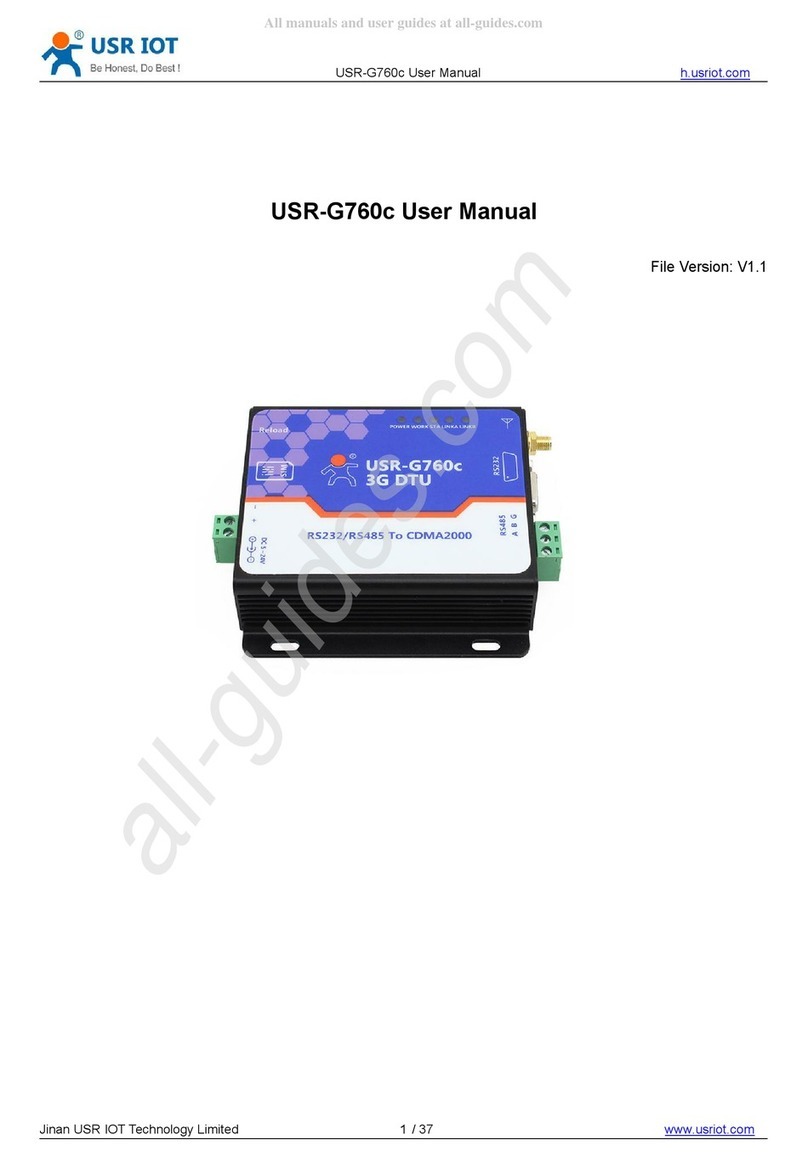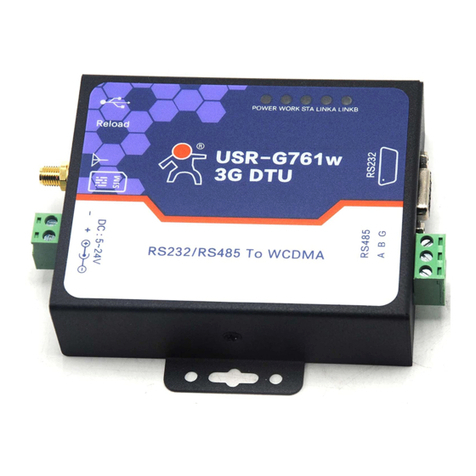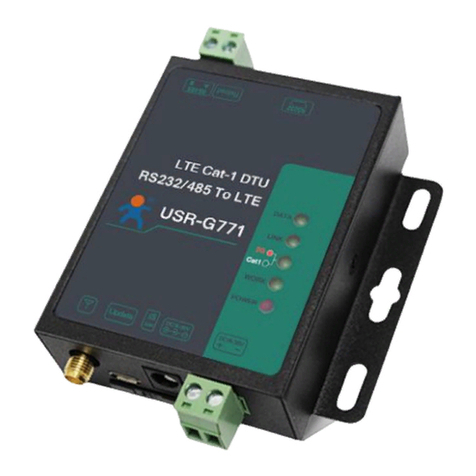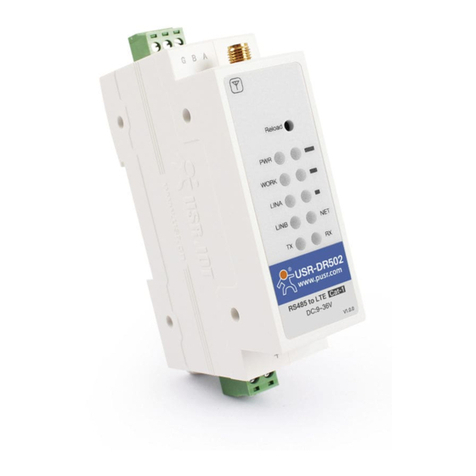
USR-MB706 User Manual Technical Support: h.usriot.com
Jinan USR IOT Technology Limited www.pusr.com
1. Introduction ...............................................................................................................................................................................3
1.1. Overview ....................................................................................................................................................................... 3
1.2. Dimensions .................................................................................................................................................................... 3
1.3. Specification .................................................................................................................................................................. 4
2. Features ..................................................................................................................................................................................... 5
2.1. Network Mode ...............................................................................................................................................................5
2.2. Operation Mode .............................................................................................................................................................7
2.2.1. Transparent Mode .............................................................................................................................................. 7
2.2.2. HTTPD Client mode .......................................................................................................................................... 9
2.2.3. SMS Mode ....................................................................................................................................................... 11
2.3. General Function ......................................................................................................................................................... 13
2.3.1. Identity Package ............................................................................................................................................... 13
2.3.2. Heartbeat Package ............................................................................................................................................14
2.3.3. Base Station Geolocation ................................................................................................................................. 15
2.3.4. GNSS ................................................................................................................................................................16
2.3.5. Modbus RTU to Modbus TCP ......................................................................................................................... 18
2.3.6. FTP Upgrading .................................................................................................................................................19
2.3.7. Indicators ..........................................................................................................................................................19
2.3.8. Hardware Reset ................................................................................................................................................ 20
2.3.9. Firmware Upgrading ........................................................................................................................................ 20
3. Serial Port ................................................................................................................................................................................23
3.1. Basic Parameters ..........................................................................................................................................................23
3.2. Frame Mechanism ....................................................................................................................................................... 24
3.2.1. Time Trigger .................................................................................................................................................... 24
3.2.2. Length Trigger ................................................................................................................................................. 24
3.3. Network Data Output Port ........................................................................................................................................... 25
4. Parameter Settings ...................................................................................................................................................................25
4.1. Configuration via AT Commands ............................................................................................................................... 25
4.2. Serial AT Commands .................................................................................................................................................. 26
4.3. Network AT Commands ..............................................................................................................................................27
4.4. SMS AT Commands ....................................................................................................................................................28
5. Contact us ................................................................................................................................................................................30
6. Disclaimer ............................................................................................................................................................................... 31
7. Revision History ..................................................................................................................................................................... 32
